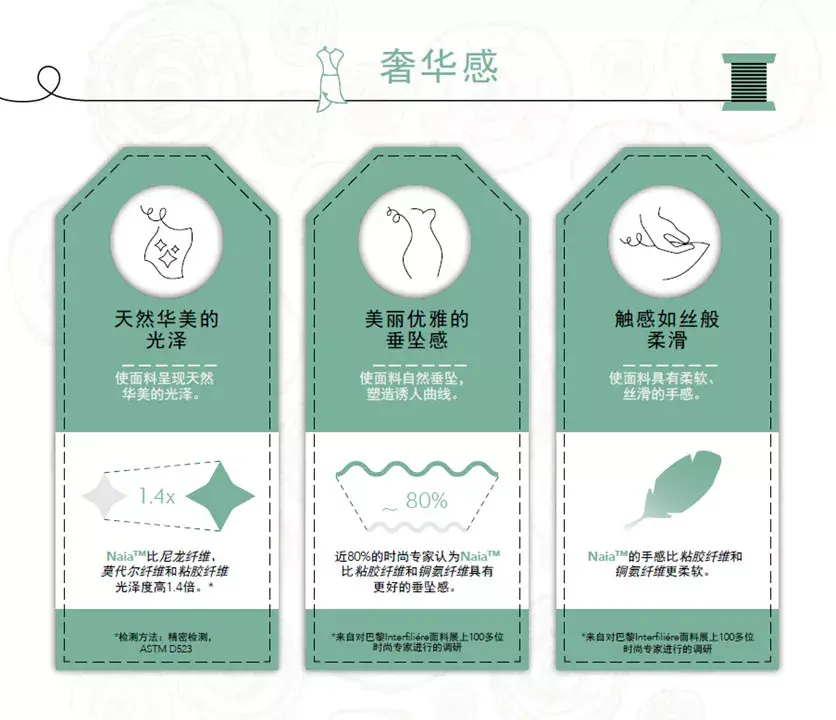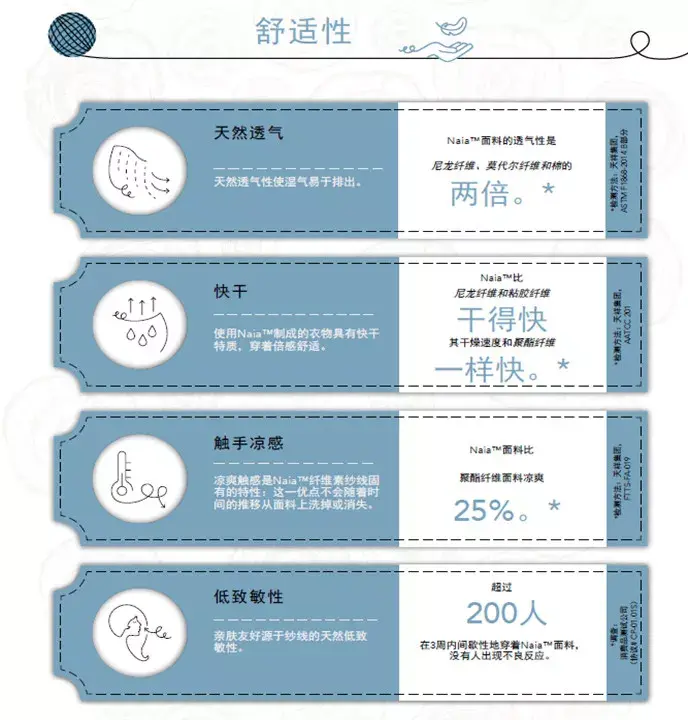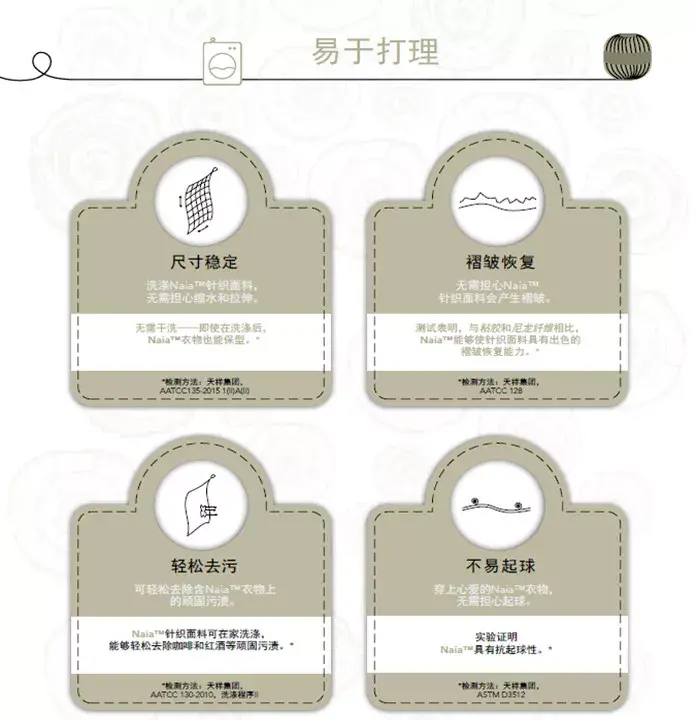What is acetate fabric? What is the difference between diacetic acid and triacetic acid? What are acetic acid products? …. Knowledge analysis of acetic acid fabrics
The ancient “soul” under the new shell
Acetate fiber, commonly known as cellulose acetate, is one of the earliest chemical fibers developed in the world, dating back more than a hundred years. From the 1930s to the 1950s, acetate fiber was widely used in the development of women’s clothing fabrics. However, common natural fiber dyes are difficult to color acetate fiber, which limits the development of acetate fiber to a certain extent. At the same time, the rise of synthetic fibers, such as nylon, polyester and other fiber materials, has greatly impacted the acetate fiber market.
With the improvement of dyeing technology, disperse dyes can now dye acetate fiber. Moreover, with the increasing environmental pressure, the bio-based fiber acetate , biodegradable and other environmentally friendly properties, as well as skin-friendly comfort and excellent silk-like effect, are once again the focus of textile companies.
The difference between diacetic acid and triacetic acid
mentioned Acetate fiber, we have to talk about its classification. Acetate fiber is produced from wood pulp as raw material. The cellulose in it is acetylated to form cellulose esterified derivatives, which are then dry-spun.
Based on the degree to which the hydroxyl group (-OH) in cellulose is replaced by an acetyl group, it is divided into diacetate fiber and triacetate fiber.
Diacetate fiber is formed after partial hydrolysis of type 1 acetate, and its degree of esterification is lower than that of triacetate fiber. Therefore, the heating performance is inferior to triacetate fiber, the dyeing performance is better than triacetate fiber, and the moisture absorption rate is higher than triacetate fiber.
Triacetate fiber is a type of acetate formed without hydrolysis, and its degree of esterification is high. Therefore, it has strong light and heat resistance, poor dyeing performance, and low moisture absorption rate (also called moisture regain).
What is Naia™? What does it have to do with acetate?

Garment made of Naia™ filament
Naia™ It is the trade name of cellulose acetate, which belongs to the category of cellulose diacetate. It was officially launched by the American Eastman Company in Paris, France in January 2017.
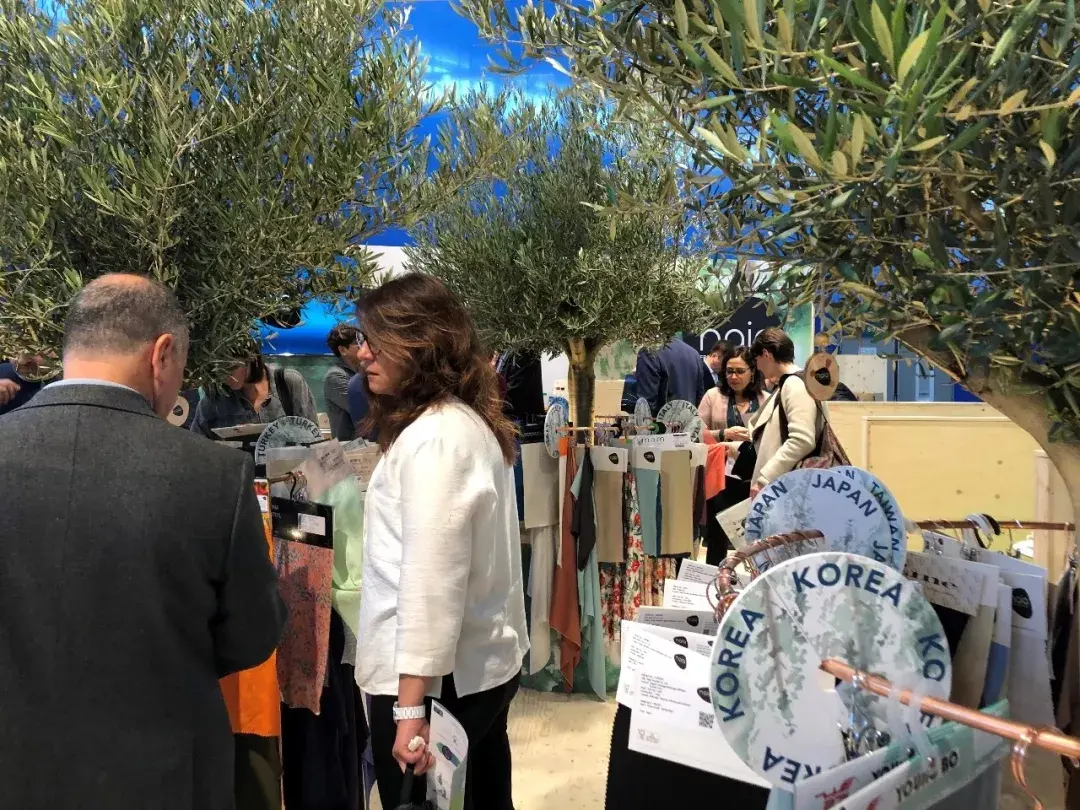
Naia™ booth at the French PV Show in February 2020
(1) Green properties of Naia™ fiber
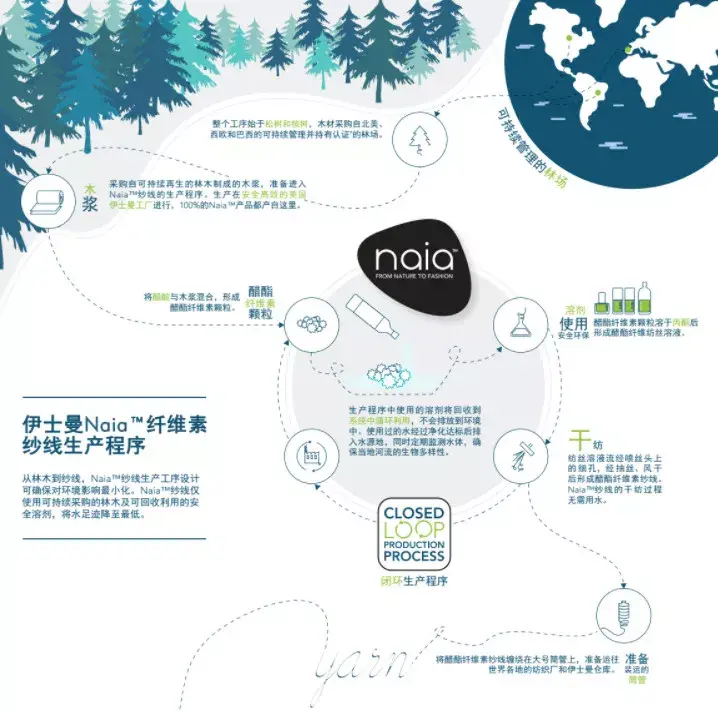
In terms of raw materials, the raw materials of Naia™ fiber come from sustainably managed pine trees and The eucalyptus forest farm ensures that no trees are damaged in the process and is certified by FSC® and PEFC™ for sustainable chain of custody.
In terms of the production process, Naia™ fiber is made by a safe closed-loop process. The solvent used in the process is recovered into the system and recycled, and will not discharge into the environment. The production water is discharged into the water source area after being purified to meet standards, and the water body is regularly monitored to ensure the biodiversity of local rivers.
In terms of product life cycle, the bio-based content of Naia™ fiber is 59%, biodegradable (has obtained freshwater degradable certification), and has been certified by a third party The certified life cycle assessment results comply with the ISO 14044 standard, it is an OEKO-TEX 100® Level 1 certified product and is included in the Higg Material Sustainability Index.

Relevant certifications that Naia™ has passed
It can be said that Naia fiber has ecological and environmentally friendly green attributes from raw materials to production to disposal.
(2) Advantages and characteristics of Naia™ fiber
In order to provide evidence for every performance of Naia™ fiber, Eastman has conducted relevant tests on Naia™’s glossiness, hypoallergenicity, quick-drying, breathability, anti-wrinkle, easy stain removal and other functions, as follows: It is an introduction to the performance of Naia™ in terms of luster, skin-friendly and easy care.
